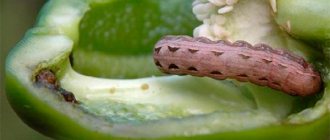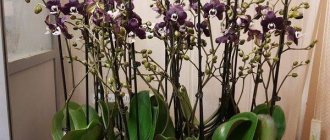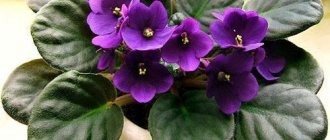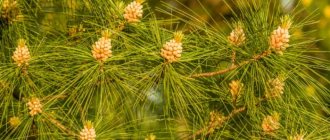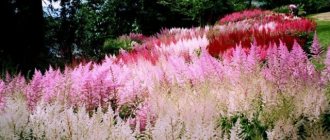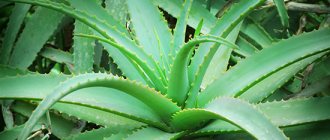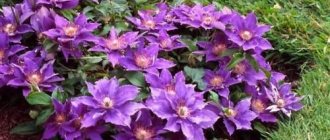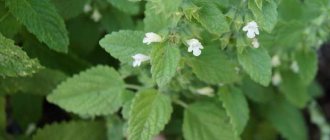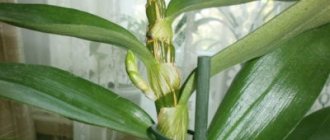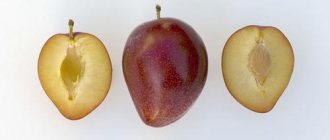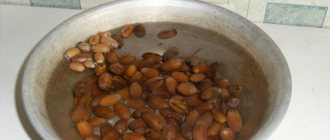Which pine trees are suitable for growing in a pot?
Pine is one of the most familiar coniferous trees for residents of temperate latitudes, capable of lifting your spirits and giving strength with its very appearance and aroma. Evergreens can help reduce depression during the long, cold, dark winter. But the main problem is that the main green inhabitants of the rooms come from tropical latitudes, where it is warm and sunny all year round. Pine is a northern tree, and even its southernmost varieties are accustomed to a significant seasonal drop in temperature. Therefore, it is best to provide a balcony, terrace or veranda for growing pine trees in a pot.
In addition, Scots pine and many other species are large trees, reaching a height of many tens of meters. Its dwarf varieties are best suited for keeping in pots, which even in adulthood rarely exceed 1 m in height. Some bushy or creeping species are also suitable. In addition to their small size, they are also characterized by their often slow growth rate, which is ideal for potted conditions. Because replanting is a very traumatic procedure for any coniferous tree.
So, if the task is to grow a pine tree in a pot, then you should choose from subtropical species of dwarf varieties.
In the modern assortment, the choice of such plants is quite wide. Below are the most popular varieties of pine trees, more or less suitable for growing in pots:
- Bosnian (variety Smidtii) is a dwarf variety with a spherical shape.
- Mountain (variety Pumilio) is an elongated bush of small height.
- Mountain (variety WinterGold) is a variety of miniature conifer whose needles change color depending on the season from light green to golden yellow.
- Weymutova (variety Radiata) is a slow-growing dwarf variety that reaches 80 cm in height only after 10 years.
- Spinous - a variety that grows as a bush, adding no more than 10 cm in height per year.
Comment! Experts from some of these varieties are able to grow mature pine trees in the bonsai style at home. But this matter is very complex and requires a truly professional approach.
Types and varieties
All conifers are divided into:
- Full-grown, in adulthood they grow up to 3 m, the annual growth is more than 30 cm.
- Medium-sized or semi-dwarf, their growth per year is from 15 to 30 cm.
- Dwarfs (dwarf), their growth is from 8 to 15 cm.
- Mini-dwarfs grow from 3 to 8 cm per year.
- Microdwarfs, their growth is up to 3 cm per year.
Dendrologists have their own classification. They consider a variety to be dwarf if at 30-50 years the plant does not exceed human height. There are many types of dwarf pine trees that can be grown in a pot at home.
Mountain pine. A characteristic feature is a spherical crown, resistant to fungal diseases and frost. Among the varieties of mountain pine we can distinguish:
- Mops , at the age of 10 years grows up to 0.5 m;
- Pinus mugo "Gnom" - maximum size - 1 m;
- Ophir - maximum size -0.5 m.
Bosnian pine (whitebark) Schmidt has a thick, dense spherical crown, grows up to 0.5 m at the age of 10 years.
Weymouth pine (eastern white):
- The Blue Shag variety is characterized by a spherical crown and bluish-green needles. Can grow up to 1.2 m.
- Makopin , which is characterized by unusual cones that become coffee-colored when ripe.
Bristlecone pine . Characterized by raised branches. Suitable for creating bonsai due to its slow growth.
How to plant a pine tree in a pot at home
To plant and subsequently grow a pine tree in a pot at home, you can:
- grow a young tree from seeds yourself;
- purchase a ready-made seedling in a store, nursery or from private individuals.
The first option is suitable for those who are truly passionate about plants, since growing from seeds is a very painstaking process that requires a lot of time and especially patience.
The second option is simpler and will suit anyone, subject to some basic rules for choosing and planting trees.
Preparing the planting container and soil
When choosing a container intended for growing young pines, you need to focus on their age. Very young plants, between 1 and 3 years old, take root best. But such pines usually have not even formed side branches yet. It is at the age of three that the first whorl (branching) usually appears on the pine tree.
Such seedlings can rarely be found in nurseries, much less stores. They are usually sold only by private individuals who grow pine trees from seeds.
Attention! For planting very young plants aged from one to three years, pots with a capacity of up to 500 ml are quite suitable.
In nurseries and stores, as a rule, you can find pine seedlings starting from 5-7 years of age. They require larger pots, from 1 to 3 liters.
Regardless of the size of the pots for planting, drainage holes must be made in them. Because pine seedlings cannot tolerate stagnant moisture. At the bottom of any container it is necessary to lay drainage made of expanded clay or ceramic fragments. The drainage layer should be at least ¼-1/5 of the volume of the pot.
You should also approach the choice of soil for growing pine trees in pots very responsibly. Due to its small volume, it should be quite nutritious, but at the same time light, loose and water- and air-permeable. Under natural conditions, pine trees grow predominantly on sandy soils, but in a pot the sand will dry out too quickly and will not be able to retain a sufficient amount of nutrients. Therefore, it is best to use a mixture of 50% high peat, 25% sand and 25% humus (or humus soil).
Often in stores you can buy ready-made soil mixture for growing coniferous plants. It is quite suitable, since it is initially characterized by a moderately acidic environment (pH 5.5-6.2), which is ideal for pine trees.
Since pines, especially young ones, are very sensitive to fungal diseases, before planting it is recommended to spill the soil with a weak solution of potassium permanganate or water with phytosporin.
Preparation of planting material
It is best to purchase pine seedlings in containers with a ball of earth. Since even exposing or drying out the roots for 5-10 minutes can lead to the young seedling being sick for a long time or dying. For this reason, when transplanting, they try to minimally disturb the earthen ball surrounding the roots of the pine seedling. Another reason is that in the soil directly adjacent to the roots there are many substances useful for them, such as mycorrhiza, without which the roots will have difficulty taking root in a new place. And, of course, when transplanting, the earthen ball should not be overdried or waterlogged. The soil humidity should be optimal, at which water does not flow from a lump of earth, but it does not disintegrate when compressed.
Landing rules
Planting a purchased pine seedling does not present any particular difficulties, since it is more of a transshipment, while the root system is practically not affected.
The pine seedling, along with a lump of earth, is simply pulled out of the container and placed in a hole prepared for it in a new pot. The planting depth level should be exactly the same as the previous one. If there is even the slightest doubt, then it is better to plant the pine tree a little higher, but under no circumstances make it deeper.
Then the soil around the seedling is compacted and, if necessary, some soil is added.
Advice! It is best to mulch the soil surface around the trunk with pine bark or pine litter from a nearby conifer. Thus, the seedling will be provided with both moisture retention and additional feeding.
When caring for a pine tree in the house, it should be provided with the most sunlit place. But in the first two weeks after transplanting, it is better to slightly shade the young tree so that it takes root well.
Transfer
Every 2-4 years, depending on the growth rate of the selected variety, pine trees need to be transplanted into a larger pot with a mandatory drainage layer.
How to grow a pine tree at home in a pot
Caring for pine at home is not so difficult if you provide the tree with suitable living conditions. But this is where there can be certain problems. After all, conifers, including pines, do not tolerate the dry and warm air of ordinary residential premises. And in winter they absolutely need relative cold, which is difficult to create in a living room.
How to water pine trees in pots
The soil in which the pine tree is planted should be slightly moist at all times. Trees have an equally negative attitude towards waterlogging and overdrying of the substrate. Under these conditions, their needles begin to fall off, and it is not always possible to save them.
Therefore, in caring for pine at home, watering is of decisive importance. It should be regular and carefully measured depending on weather conditions. If the sun is shining brightly and the soil can dry out quickly, you need to water it every day. In cloudy or cold weather, you can limit yourself to watering 1-2 times a week.
In this case, the composition of the water, the degree of its hardness and temperature do not matter much. It is best to water not with a strong stream, but gradually, using a spray bottle. Moreover, when caring for a pine tree in an apartment, it can only survive with daily spraying.
You can also use the method of watering from below, when you insert a wick through the drainage holes and place it in a tray filled with water. In this case, the tree itself will use as much water as it needs for some time.
How to feed an indoor pine tree
It is better to use fertilizers to a minimum for pine trees growing in a pot. Pine trees should be watered twice a season with the addition of a root formation stimulator.
In the first year after planting, the young seedling practically does not need feeding. Especially if fairly nutritious soil was used.
Caring for a pine tree in a pot requires the use of a special complex fertilizer for conifers about 2 times a year. When used according to the instructions, it must be further diluted by 2 times, since the concentration is designed for trees growing in open ground.
Protection from diseases and pests
In conditions of pot growing, pine can most often be affected by various fungal diseases. For prevention purposes, once a month it is necessary to add phytosporin or foundationazole to the water for irrigation.
Pests rarely attack pine trees in a pot. But if this does happen, then it is better to use a biological insecticide - phytoverm - to protect the tree.
Wintering a live pine tree in a pot
Winter is perhaps the most difficult period for pine growing at home. It definitely won't survive in a hot and dry room. In order for a tree to overwinter normally, it needs to be provided with a lot of light and a temperature from 0 ° C to + 10 ° C. Typically, these conditions are easy to meet on a glazed balcony or loggia, where in the most severe frosts you can turn on an electric heater.
If there is no heater, then it is necessary to protect the roots from frost. Because the layer of soil that is in the pots is not enough to prevent the roots from freezing. To do this, they are usually lined with polystyrene or foam, and all internal spaces are filled with leaves, sawdust or straw. On particularly frosty days, the above-ground part of the plants can be covered with transparent agrofibre, which allows light to pass through but protects from low temperatures and drying out.
If it is not possible to keep the pine tree cool in winter, then it is better to transplant the tree into the garden as soon as possible. Because it will not survive more than one year in such conditions.
Gardening tips
Pine has never been classified as an indoor plant, so caring for a home tree will require maximum observation and a path full of possible trials, disappointments and errors.
Perhaps the following recommendations from gardeners can help along the way:
- Mature pine trees need an abundance of sunlight, while young seedlings may be hypersensitive to it. During the hottest hours they may need some shade.
- If it is impossible to provide the necessary temperature drop in winter, the pine tree should be provided with maximum air humidity. However, it is worth keeping in mind that a humid and warm environment is an excellent breeding ground for fungal infections.
- If after transplantation the pine needles begin to turn yellow, the roots may have dried out. In this case, the tree is very difficult to preserve. You can try placing it in as cool and bright conditions as possible.
- Yellowing of needles in the lower part of trees can also be associated with a lack of light or too much fertilizing.
- Ordinary artificial light in no way replaces sunlight. Because it lacks ultraviolet rays necessary for normal photosynthesis. Because of this, the growth of pine can be greatly retarded.
- In the autumn, the loss of some of the needles is almost a normal phenomenon for pine; you should not be afraid of this.
Bonsai
Pine is an excellent material for creating bonsai. Some gardeners create beautiful miniature copies of adult trees from plants in pots with their own hands, giving pine trees bizarre shapes. When getting into bonsai, the main task is to create conditions for the plant to grow minimally. There are several ways to achieve this:
- frequent pruning of shoots and roots;
- use of poor and light soils;
- irrigation methods;
- artificial growth inhibition.
The miniature pine should look like a copy growing in the wild. To create the effect of an old tree, the pine bark is specially cut in several places, and the branches are bent by hanging a weight and wrapping the branches and trunk with wire.
Sources:
https://alltravnik.ru/derevya/sosna-v-domashnih-usloviyah https://fermer.blog/bok/hvoynye-derevya/sosna/vyraschivanie-sosny/13869-vyraschivanie-komnatnoy-dekorativnoy-sosny-v-gorshke .html https://hvorast.ru/sosna/dekorativnie-komnatnie-sosni
